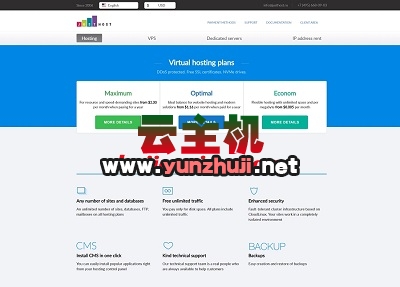Understanding AWR: A Comprehensive Guide
AWR, or Application Workload Reporting, is a performance diagnostic and analysis tool provided by Oracle. It is designed to help database administrators (DBAs) and application developers understand and optimize the performance of their Oracle databases. This guide will provide an in-depth understanding of AWR, its features, benefits, and how to use it effectively.
What is AWR?
AWR is a set of SQL scripts that collects statistics about the database’s activity over a period of time. These statistics are then used to generate reports that provide insights into the database’s performance. The reports include information such as the number of transactions processed, the amount of data read and written, the number of locks acquired and released, and much more.
Why Use AWR?
AWR is a powerful tool for performance tuning. By analyzing the data collected by AWR, DBAs can identify bottlenecks in the system, determine which queries are consuming the most resources, and make informed decisions about where to focus their optimization efforts. Additionally, AWR can help with capacity planning by providing historical data on resource usage.
How Does AWR Work?
AWR works by collecting data from the database’s dynamic performance views at regular intervals. This data is then stored in a special table called the AWR base table. When an AWR report is generated, the data from the base table is analyzed and presented in a format that is easy to understand.
Generating an AWR Report
To generate an AWR report, you need to have access to the database and the necessary privileges. Here are the steps to generate an AWR report:
1、Connect to the database using SQL*Plus or another SQL client.
2、Run the following command to start the AWR data collection:
EXEC dbms_workload_repository.create_snapshot();
3、Wait for the desired period of time (usually one hour) before generating the report.
4、Run the following command to generate the AWR report:
EXEC dbms_workload_repository.generate_report(interval => 1);
5、The report will be displayed in your SQL client. You can also save it to a file for later viewing.
Interpreting an AWR Report
An AWR report contains a wealth of information, but interpreting it can be challenging for those who are not familiar with it. Here are some key sections of the report and what they mean:
Top Events
This section lists the events that consumed the most resources during the reporting period. Events can include things like SQL execution, parsing, hard parses, etc. By identifying the top events, you can get a sense of what types of operations are most demanding on your system.
Top SQL
This section lists the SQL statements that consumed the most resources. This is often the first place to look when trying to identify performance issues. By examining these queries, you can see if they are inefficient or if they are simply being executed too frequently.
Instance Efficiency Percentages
This section provides metrics related to the efficiency of the database instance. It includes information on CPU usage, memory usage, I/O wait times, and other factors that can impact performance.
Load Profile
This section provides a summary of the workload on the database during the reporting period. It includes information on the number of active sessions, the number of transactions processed, and the amount of data read and written.
Best Practices for Using AWR
To get the most out of AWR, follow these best practices:
Schedule regular AWR runs: To get a good picture of your database’s performance over time, schedule AWR runs at regular intervals (e.g., every hour).
Analyze trends: Rather than looking at individual reports, look at trends over time to identify patterns and potential issues.
Compare different periods: If you suspect a performance issue, compare AWR reports from different periods to see if there has been a change in behavior.
Use other tools in conjunction with AWR: While AWR is a powerful tool, it is not the only one available. Consider using other tools such as TKPROF, Statspack, or Enterprise Manager for a more comprehensive view of your database’s performance.
Keep historical data: Retain historical AWR data so you can refer back to it if needed. This can be particularly useful if you need to troubleshoot an issue that occurred several weeks or months ago.
Automate report generation: If possible, automate the process of generating and distributing AWR reports. This can save time and ensure that reports are generated consistently.
Train your team: Ensure that your team understands how to use AWR and interpret its reports. This will help them make better decisions about performance tuning and optimization.
Review and adjust your AWR parameters: Depending on your database size and workload, you may need to adjust the default parameters for AWR. For example, you might want to increase the interval between snapshots or change the retention period for historical data.
Use AWR in conjunction with other performance tools: While AWR provides valuable insights, it should be used in conjunction with other performance monitoring and diagnostic tools for a complete picture of your database’s health.
Regularly review and update your AWR configuration: As your database grows and changes, your AWR configuration may need to be updated to ensure that it continues to provide accurate and useful information.
FAQs
Q: How often should I run AWR?
A: The frequency at which you run AWR depends on your specific needs and the nature of your workload. However, as a general rule, it is recommended to run AWR at least once per day. For systems with high transaction volumes or those that experience significant changes in workload, running AWR more frequently (e.g., every hour) may be beneficial.
Q: Can I run multiple instances of AWR simultaneously?
A: Yes, you can run multiple instances of AWR simultaneously on different databases or even on different instances within the same database. Each instance will collect its own set of data and generate its own report. However, keep in mind that running multiple instances simultaneously may increase the load on your system so it’s important to monitor this carefully.

 云主机测评网
云主机测评网














最新评论
本站CDN与莫名CDN同款、亚太CDN、速度还不错,值得推荐。
感谢推荐我们公司产品、有什么活动会第一时间公布!
我在用这类站群服务器、还可以. 用很多年了。